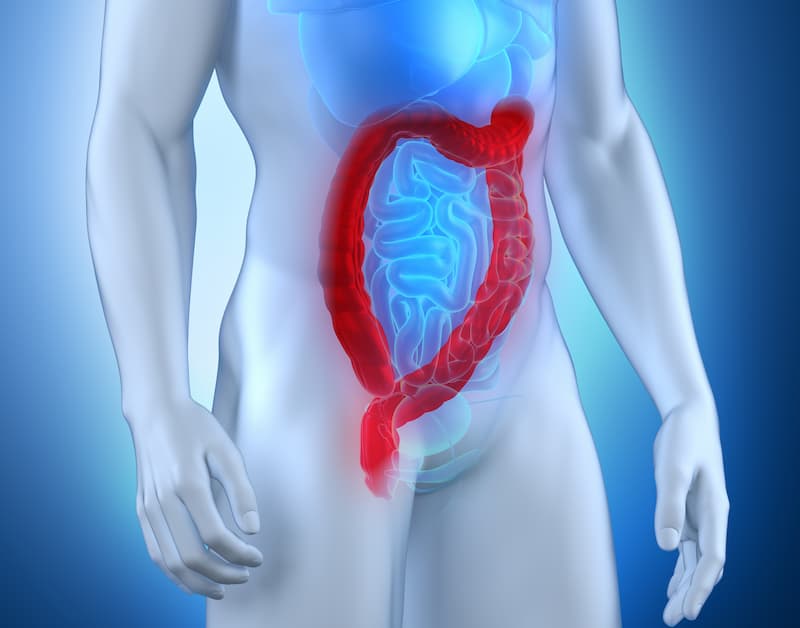Recurrence or Risk of Death Reduced by 50% With Atezolizumab/Chemo in dMMR Colon Cancer
Results from the ATOMIC trial found a 50% reduction in the risk of death for patients with dMMR colon cancer receiving atezolizumab/chemotherapy.
Results from the ATOMIC trial found a 50% reduction in the risk of death for patients with dMMR colon cancer receiving atezolizumab/chemotherapy.

A 50% reduction in the risk of death was observed with atezolizumab (Tecentriq) plus chemotherapy vs chemotherapy alone for patients with stage III colon cancer, according to results from the phase 3 ATOMIC trial (NCT02912559) presented during a press briefing at the 2025 American Society of Clinical Oncology (ASCO) Annual Meeting.
The trial sought to determine if adding an immune checkpoint inhibitor to standard care would improve outcomes after surgical resection in this population.
“These data establish this combination as a new standard treatment for patients with stage III colon cancer and dMMR,” said lead author Frank A. Sinicrope, MD, coleader, Gastrointestinal Cancer Program, and clinical investigator, Mayo Foundation, both in Rochester, Minnesota, during the press briefing.
ATOMIC enrolled 712 patients across more than 300 sites in the National Clinical Trials Network. Patients were eligible if they had resected stage III colon cancer, dMMR determined by immunohistochemistry, no prior chemotherapy or radiation, and an ECOG performances status of 2 or less.
After undergoing surgery, patients were randomly assigned to receive atezolizumab plus the standard mFOLFOX6 chemotherapy regimen of oxaliplatin, leucovorin calcium, and fluorouracil, followed by 6 months of atezolizumab in the treatment arm vs mFOLFOX6 alone in the control arm. The primary end point was disease-free survival (DFS) and secondary end points were overall survival and adverse event profile.
At the data cutoff of February 4, 2025, the median follow-up was 37.2 months. At the second interim analysis at 75% of DFS events, it was determined that the study met the protocol-specified boundary for efficacy and the data were released.
At 3 years, the combination resulted in a DFS rate of 86.4% vs 76.6% for chemotherapy alone (HR, 0.50; 95% CI, 0.34-0.72; P < .0001). “This is a substantial…benefit achieved,” Sinicrope said. Referring to the DFS curves, Sinicrope added that “the [DFS] curve is plateauing, indicating that we’re not seeing any more recurrences or death with the immunotherapy and chemotherapy combination.”
Subgroup analysis also demonstrated a positive DFS benefit across subpopulations defined by age, sex, race, tumor location, and risk group for patients in the mFOLFOX plus atezolizumab arm. In particular, proximal (HR, 056; 95% CI, 0.38-0.83) and distal (HR, 0.31; 95% CI, 0.11-0.87) tumor location, T-stage (Tx/T1-3: HR, 0.51; 95% CI, 0.31-0.85; T4: HR, 0.46; 95% CI, 0.27-0.79), and risk group (low: HR, 0.47; 95% CI, 0.24-0.94); high: HR, 0.51; 95% CI, 0.33-0.78) demonstrated DFS that favored the treatment vs the control arm.
“No matter the patient’s age, their sex, their race, their location, T-stage, or N-stage, patients are doing better with the addition of immunotherapy to chemotherapy,” Sinicrope said.
The safety of mFOLFOX6 plus atezolizumab was in line with the known safety profiles of each, with a manageable increase in nonfebrile neutropenia.
“We regard [these findings] as a highly impactful study that will change clinical practice, and it actually represents the first immunotherapy adjuvant study in colon cancer,” Sinicrope concluded.
“The most important thing about this study is that it involves a real-world population that I will see in my clinic,” Joel Saltzman, MD, medical oncologist, Taussig Cancer Center, Cleveland Clinic, in Ohio, said during the commentary section of the press briefing. “We have seen patients in whom we thought immunotherapy would be helpful, but we weren’t sure if we could integrate it into their care,” Saltzman continued.
He further noted that “this was a study that took 5 years to accrue patients at more than 300 sites, and it would not have been feasible without the support of federal funding from the National Cancer Institute and our cooperative group network.”
Reference
Sinicrope FA, Ou F-S, Arnold D, et al. Randomized trial of standard chemotherapy alone or combined with atezolizumab as adjuvant therapy for patients with stage III deficient DNA mismatch repair (dMMR) colon cancer (Alliance A021502; ATOMIC). J Clin Oncol. 2025;43(suppl 17):LBA1. doi:10.1200/JCO.2025.43.17_suppl.LBA1